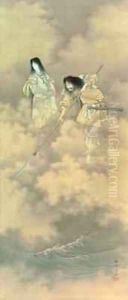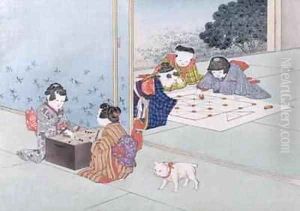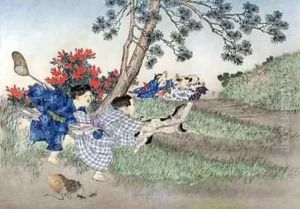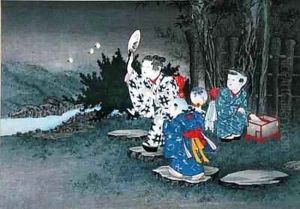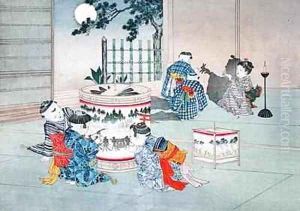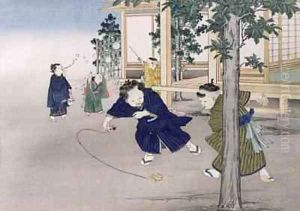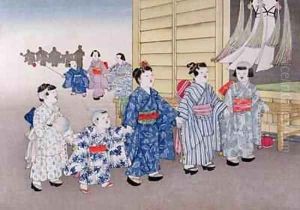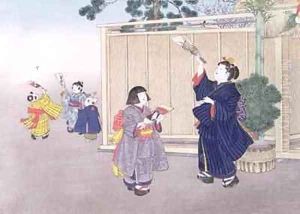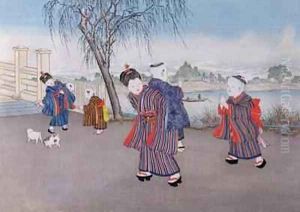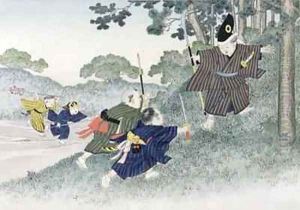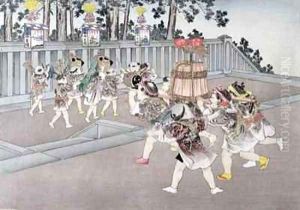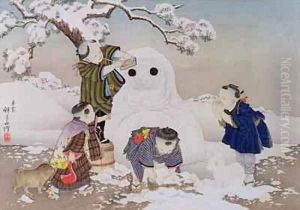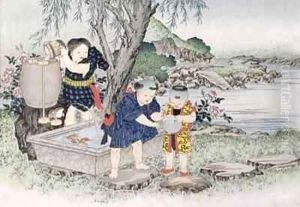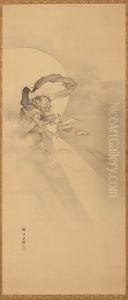Kobayashi Eitaku Paintings
Kobayashi Eitaku was a distinguished Japanese artist known for his contributions to the world of ukiyo-e and book illustrations. Born in Edo (modern-day Tokyo), Eitaku showed an early talent for painting and drawing, which led him to study under the renowned ukiyo-e master Kuniyoshi, one of the last great figures of the ukiyo-e school. Eitaku's work is characterized by dynamic compositions and a vivid portrayal of subjects, ranging from historical events to mythological scenes, sumo wrestlers, and beautiful women (bijin-ga). Throughout the 1860s and 1870s, Eitaku's career flourished as he became well-known for his illustrations in books and newspapers, which were widely circulated during the Meiji period. He was particularly adept at using the kuchi-e frontispiece in novels, a format that became increasingly popular. His illustrations were not only appreciated for their artistic quality but also for how they reflected the changing times of Japan as the country opened up to the West and began to modernize. Eitaku's work also extended to traditional Japanese woodblock prints, where his mastery of the medium was evident. He was involved in the production of nishiki-e, or multi-colored woodblock prints, which were highly regarded for their complexity and beauty. Despite the decline of the ukiyo-e genre towards the end of the 19th century, Eitaku managed to maintain a respected position in the art world until his untimely death in 1890. Eitaku's legacy is that of a bridge between the traditional and modern worlds. His art captures the essence of the Edo period while simultaneously embracing the Meiji era's new influences. Today, his works are celebrated for their historical significance and artistic merit, showcasing Eitaku's unique ability to adapt and thrive in a time of great cultural and societal transition.
